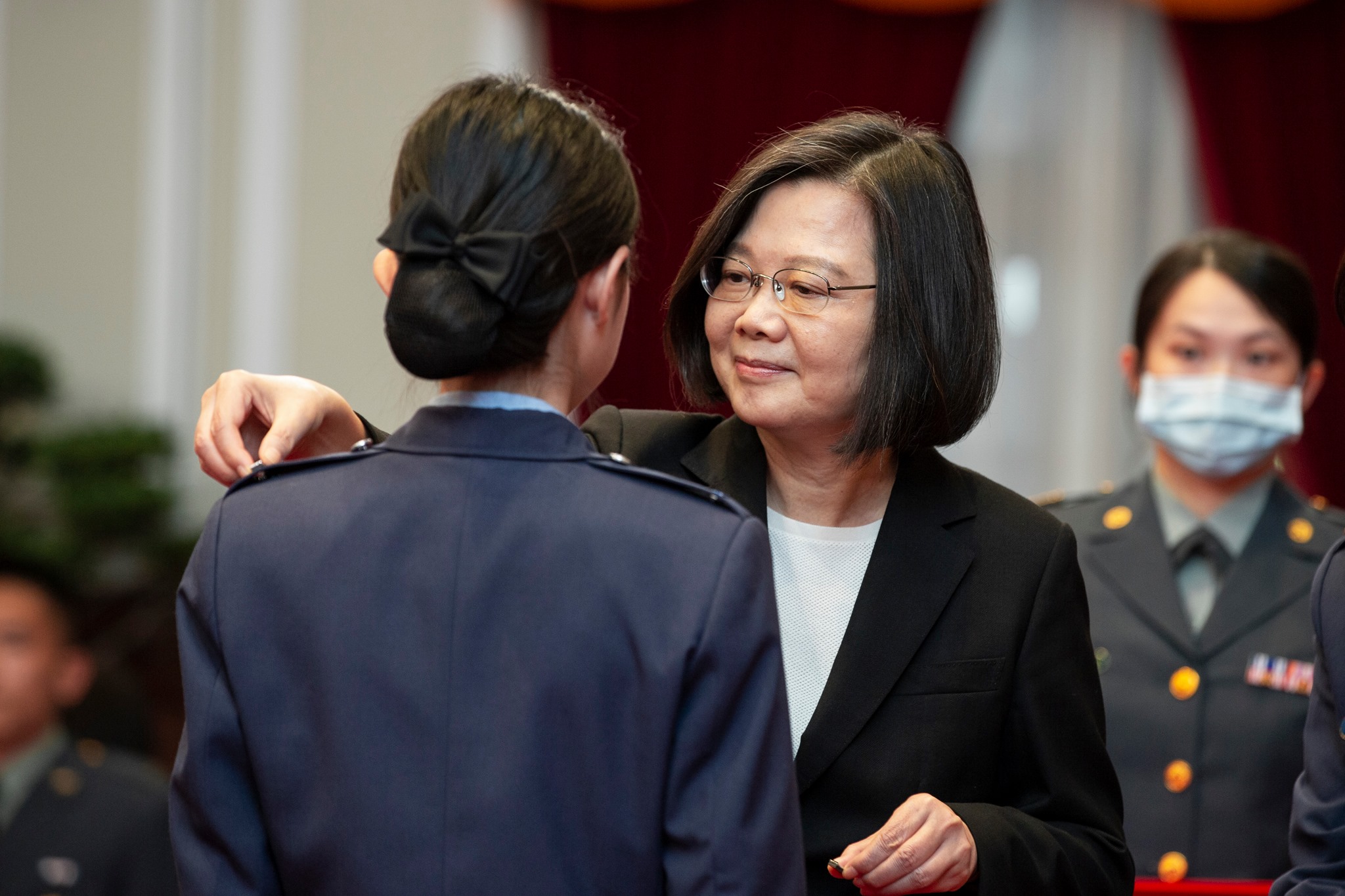For many, the 228 Incident of 1947 has entered Taiwanese memory as a milestone of national history, symbolizing the divorce between the Taiwanese and Chinese as well as the anger between the two cultures.
One cannot fully understand the shared desire among Taiwanese to keep China at arm’s length as well as the suspicion with which they regard cross-Strait relations without understanding a few key historical elements that color how the Taiwanese regard China.
On the occasion of the 70th anniversary of the 228 Massacre, this article provides an overview of how the Taiwanese experienced and regarded the retrocession of Taiwan from Japan to the Republic of China (ROC) in 1945 — de facto retrocession, since Taiwan wasn’t de jure “handed” to anyone.
The memory of what is considered at best as a major mishandling, at worst as a tragedy, is a crucial element in assessing Taiwan’s nation building and distant relation to China.
The birth certificate of a nation?
Nowadays Taiwan’s nation building and suspicions of China as a credible political alternative are still fueled by the experience of the arrival of the Kuomintang (KMT) administration and army between 1945 and 1950, following both the Japanese capitulation in World War II and the KMT’s defeat in the Chinese Civil War in 1949.
At the time, Taiwan had been occupied by Japan for 50 years and was profoundly acculturated. The convergence between the new rulers and the Taiwanese population soon turned to a collision course and later contributed to the manner in which the Taiwanese questioned their identity as well as their alienation vis-à-vis China.
Although remembrance of the events sometimes serves political purposes (as they were recently exploited by China as a means to extend Taiwan’s memories of the trauma to the continent), memory of the massacre serves as a key foundation of Taiwanese nationalism today.
Tragic misunderstandings
As a matter of fact, the Taiwanese were not unhappy that Japan was defeated in WWII as it meant the end of colonial rule and, for some, the return to the “Chinese motherland.” The KMT were to take over Taiwan militarily, politically and economically. To this end, Chiang Kai-shek appointed Chen Yi as governor-general of Taiwan and gave him substantial powers.
Despite air raids on its industries during WWII, Taiwan was spared from heavy destruction. Thus, when the first Chinese soldiers landed in Taiwan in October 1945, they encountered a wealthy, almost intact piece of land where the population spoke Japanese. Consequently, the Chinese quickly regarded Taiwanese with growing distrust and envy for having been spared the destruction seen in China as well as for being “tainted” by Japanese culture.[1]
Taiwan’s economic wealth, public health standards and social order nevertheless impressed the Chinese. However, all these indicators plummeted rapidly under KMT rule. The ROC regime shut down Taiwan’s machinery industry and other industries involving heavy metal and moved it all to China.[2] Food shortages soon developed even though Taiwan had not suffered this kind of situation during the war. The collapse of the public health system triggered epidemics of bubonic plague and cholera, brought to Taiwan by the Chinese soldiers.[3] Clearly, the new administration was widely incompetent in maintaining social order, transportation and other public services. Corruption was widespread and the public budget was often misallocated.[4] In addition, Governor Chen tried to create the basis of a socialist economy, with considerable state control, which the Taiwanese were opposed to.[5]
Adding to such mishandling, the KMT imposed Chinese culture and anti-communist sentiment to legitimize itself and suppressed whatever could distinguish Taiwan from China.[6] The KMT regarded itself as the legitimate ruling power of China, ensuring the fa tong (legitimate succession).[7] For the ROC, it was a matter of survival.[8] Then the KMT tried to Sinicize Taiwanese society in order to prevent the idea of a Taiwanese nation, which would signify the death of the ROC, and in turn, the death of the orthodox China that Chiang claimed to represent.
‘Dogs go and pigs come’[9]
Some Taiwanese regarded the Chinese soldiers as thieves, backward, illiterate, and dirty. There were stories of Chinese soldiers staring at elevators, unable to understand how they worked.[10] The soldiers were feared after stories of molestation, rape, and killings. In 1947, the state of Taiwan’s society and security had severely deteriorated, and the crime rate was rising almost exponentially. That, added to the fact that Taiwanese were treated as traitors and foreigners by the new Chinese occupation, triggered rage among the island’s people.
Chen Yi seriously mishandled his power and misunderstood the real nature of Taiwanese grievances. The governor regarded discontent as rebellion, which in reality it stemmed primarily from demands for better management and general exasperation over corruption and ill-suited policies. As a result, Chen’s name will forever be linked to the upcoming repression in Taiwan.[11]
The last straw
The attempted unification of two long-separated populations ended up in turmoil. On Feb. 28, 1947, a Taiwanese woman selling cigarettes on the black market to make a living was molested by Chinese police officers who lit the fuse of the powder keg.[12] Soon thereafter a mob formed and protested against the policemen; one law enforcement officer opened fire and killed a bystander. The following day, protesting crowds were also targeted outside the police station, this time resulting in several casualties, opening the episode known as the 228 Incident.[13] This sparked an uprising, with Taiwanese killing and injuring a large number of Chinese — many of them innocent.
To the nationalist authorities, this was like a revolution, perhaps even driven by communists “sleeper” agents.[14] On March 8, 1947, new Chinese troops landed in Taiwan and engaged in indiscriminate killings.[15] As harsh Chinese repression was unleashed, intellectuals and local political powers were violently purged. Fearing that it was facing a communist uprising, the KMT used in Taiwan the same destructive counter-insurgency tactics it had used on the continent.
By the end of the month, the troubles ended. The incident would leave deep scars that would be long remembered in post-dictatorship Taiwan.[16]
A collective memory alienated from China
During the 1970s and 80s, the 228 Massacre was the rallying call for Taiwanese opposition.[17] Today, the incident has entered Taiwanese memory as a milestone of national history.[18] For many, it symbolizes the divorce between the Taiwanese and Chinese as well as the anger between the two cultures.
As Stéphane Corcuff, a prominent French researcher based in Taipei, put it: “The 2/28 Incident, was in every sense a founding massacre, the birth certificate of Taiwan’s independence movement, which soon developed abroad into an initial form of anti-Chinese, anti-“Chiang Kai-shek’s clique” promoting the “Independence of Taiwan” from the ROC on Taiwan.”
President Tsai Ing-wen has promised that her administration will launch a new investigation into the political repression. On its part, the KMT continues to hold tons of archival material away from the public and still has to fully answer for its actions.
The debate over KMT crimes was opened a few decades ago only, as a result of the democratization and the need for the Taiwanese to explore their history. All these events now form a collective memory, feeding a consistent national historical narrative. It can be said that the way the Chinese handled the “retrocession” greatly influenced the strengthening of a Taiwan-centric consciousness by outlining the differences between Taiwanese and Chinese.
During the KMT dictatorship, exiled Taiwanese intellectuals concluded that Taiwan was governed by a new foreign colonizer far worse than the previous one.[19] For them, Taiwanese identity had long since evolved into a culture distinct from China’s.[20] If such views are always debatable, they nevertheless are the ones that for decades have enjoyed the greatest success in Taiwan.
Of course, neither the Chinese Communist Party (CCP) nor the People’s Republic of China bear responsibility for the catastrophic early management of Taiwan by the KMT. Nevertheless for the Taiwanese, the idea that China and Taiwan form one entity suffered a major blow given the ethnic nature of the confrontations during the “retrocession” and after, during the White Terror and the following segregation between Taiwanese and waishengren (“mainlanders”).[21] The manner in which the Chinese wielded their power in Taiwan very likely fueled the lack of identification with China among the Taiwanese.
The fact that the memory of such events resurfaced with democratization should trigger alarm in Beijing. The CCP should note that threatening the Taiwanese, or using underhanded tactics against them, will not yield any concrete results. On the contrary, such behavior signals to the Taiwanese that the CCP has taken on the mantle of the authoritarian KMT, its enemy brother.
[1] Goldstein, Steven M, China and Taiwan, China Today, Cambridge UK, 2015, p. 44.
[2] Ibid.
[3] Ibid.
[4] Copper, John F., Taiwan. Nation state or province? (sixth edition), Westview Press, Philadelphia, 2013, p. 45.
[5] Ibid. 45
[6] Danielsen, Michael, “On the road to a common Taiwan identity,” in Lee Shyu-tu, Williams Jack.F, “Taiwan’s struggle – Voices of the Taiwanese” Rowman and Littlefield, Plymouth UK, page 139
[7] According to this view, Taiwan had to be the “real China,” compared to the one stolen by the communists. As a consequence, Chiang presented its regime as defender of Chinese orthodoxy, the “daotong.”
[8] Courmont, Barthélémy, « Souveraineté, démocratie et identité : la question permanente et sensible de la nation à Taiwan. », Revue internationale de politique comparée 1/2011 (Vol. 18), p. 87-104 URL : www.cairn.info/revue-internationale-de-politique-comparee-2011-1-page-87.htm
[9] This Taiwanese saying is useful for highlighting the amount of anger throughout Taiwan during the times of the retrocession. It was originally aimed at brandishing both Japanese and Chinese powers over Taiwan as being identically hawkish. Source: Goldstein Steven M, China and Taiwan, China Today, Cambridge UK, 2015, p. 14
[10] Courmont.
[11] Although he was executed in 1950 for considering to defect to the Chinese Communist Party in order to spare populations in China from the war.
[12] Copper, p. 45.
[13] Rigger, Shelley, Why Taiwan matters. Small island, global powerhouse (updated edition), Rowman and Littlefield Publishers, Lanham, Maryland, 2014, p. 25.
[14] Copper, p. 45.
[15] Ibid.
[16] Rigger, p. 25.
[17] Copper, p. 46.
[18] Corcuff, Stéphane, “Taiwan,” 2008, p. 8.
[19] Corcuff, p. 8.
[20] Ibid.
[21] The second wave of immigrants from China, from 1945 to 1950.
You might also like
More from Cross-Strait
Beijing Was Cooking the Frog in Hong Kong Well Before the National Security Law
Well before the coming into force of the NSL on July 1, the special administrative region had already become a …
President Tsai’s Second Term and Cross-Strait Relations: What to Watch Out For
The next four years will be marked by uncertainty over China’s trajectory and the state of the world in the …
As Coronavirus Crisis Intensifies, Beijing Continues to Play Politics Over Taiwan
With a major epidemic on its hands, the Chinese government has not ceased its political warfare activities against Taiwan. It …









